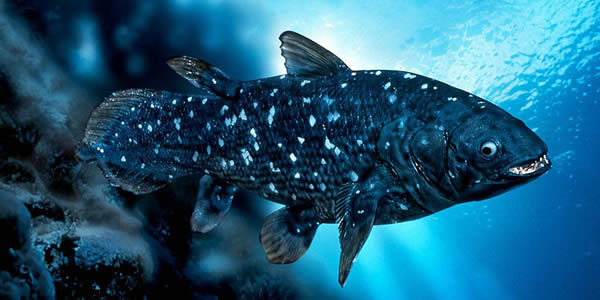

Living fossil is a term coined by Darwin to indicate some species, animals or plants, which have morphological, anatomical and structural features considered "primitive". They exhibit notable longevity and they often exhibit little taxonomic diversity. Many "living fossils" have been discovered recently, because before we thought that they were extinct or because we didn’t know that they existed. Some examples are:
1) The fish “Latimeria Chalumnae”. This was caught in 1938 at the mouth of Chalumna in South Africa. It was 1.50 m long and weighed 57 kg. As the fishermen had never seen it, they embalmed and sent it raving at the Museum of East London. The curator of the museum recognized that exemplary in the characteristics of Crossopterygii Celacantoformi, a finfish "muscular" born during the Paleozoic era, 400 million years ago, and thought to be extinct.
2) The opossum is a marsupial mammal that has very similar characteristics to his relatives from the Mesozoic era.
3) The Limulus, the Atlantic horseshoe crab, is an arthropod similar to the giant fossil forms of the Jurassic.
4) The Nautilus, a cephalopod, remained unchanged from the Triassic to the present.
5) Sharks, which appeared 400 million years ago, have evolved very little over the course of geological time, but their characteristics have preserved them unchanged despite the profound geological changes, climatic, biological around them. Sharks have maintained a very ancient feature: they retain uric acid in their muscles, a kind of primal excretion excretory apparatus training.
6) Ginkgo Biloba is a plant, the only survivor of his family and it is a gymnosperm whose origins date back to the Paleozoic era.
Fonti: Wikipedia Living Fossils

